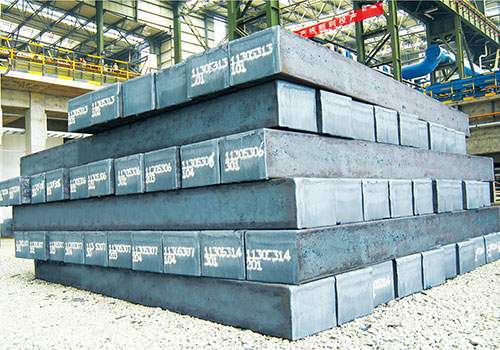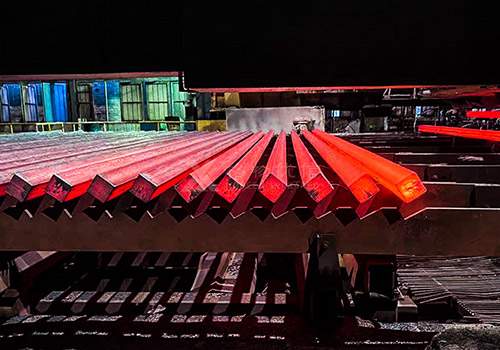
Metal 4140: A Comprehensive Guide for Engineers
Introduction
4140 Metal is a versatile alloy steel known for its strength and toughness, making it a popular choice in various engineering applications. Composed primarily of chromium and molybdenum, this material exhibits excellent mechanical properties and can be heat-treated to enhance its performance. In this comprehensive guide, we will explore the characteristics, applications, and benefits of 4140 Metal , providing engineers with essential insights for effective material selection.

Properties of Metal 4140
Chemical Composition
4140 Metal consists of the following key elements:
| Element | Percentage (%) |
|---|---|
| Carbon (C) | 0.38 – 0.43 |
| Chromium (Cr) | 0.80 – 1.10 |
| Molybdenum (Mo) | 0.15 – 0.25 |
| Manganese (Mn) | 0.75 – 1.00 |
| Phosphorus (P) | ≤ 0.04 |
| Sulfur (S) | ≤ 0.04 |
The combination of these elements contributes to the alloy’s high strength, wear resistance, and toughness, making it suitable for demanding applications.
Mechanical Properties
4140 Metal is known for its outstanding mechanical properties, which can vary based on heat treatment and processing methods. Key mechanical properties include:
- Tensile Strength: 655 MPa (95 ksi) (quenched and tempered)
- Yield Strength: 415 MPa (60 ksi)
- Hardness: 28 – 32 HRC (depending on heat treatment)
- Elongation: 20% in 50 mm
These properties ensure that 4140 Metal can withstand heavy loads and harsh environments, making it ideal for various engineering applications.
Heat Treatment of Metal 4140
Heat treatment is crucial for optimizing the properties of 4140 Metal . Common heat treatment processes include:
Annealing
Annealing involves heating the metal to a specific temperature and then slowly cooling it. This process relieves internal stresses and increases ductility.
Quenching and Tempering
Quenching involves rapidly cooling the material in water or oil after heating, which hardens the metal. Tempering follows quenching, where the metal is reheated to a lower temperature to reduce brittleness while maintaining strength.
| Heat Treatment | Process Description | Resulting Properties |
|---|---|---|
| Annealing | Heat to 843°C (1550°F), slow cool | Improved ductility, lower hardness |
| Quenching | Heat to 845°C (1550°F), cool rapidly | Increased hardness and strength |
| Tempering | Reheat to 400-700°C (750-1300°F) | Reduced brittleness, maintained strength |
Applications of Metal 4140
Due to its excellent mechanical properties, 4140 Metal is widely used in various industries, including:
Aerospace
In aerospace applications, 4140 is used in components that require high strength and durability, such as landing gear, axles, and aircraft frames.
Automotive
The automotive industry utilizes 4140 Metal for manufacturing gears, crankshafts, and other critical components that must withstand high stress and wear.
Oil and Gas
In oil and gas exploration, 4140 is used for drill bits and shafts, where its toughness and resistance to wear are essential.
Construction
Construction equipment often employs 4140 Metal for parts that require high strength, such as pins and bushings.
Advantages of Metal 4140

Strength and Durability
One of the primary advantages of 4140 Metal is its exceptional strength and durability, which makes it suitable for high-stress applications.
Versatility
4140 Metal can be easily machined and fabricated, allowing engineers to create complex shapes and components tailored to specific applications.
Cost-Effectiveness
Despite its high-performance characteristics, 4140 Metal is relatively cost-effective compared to other high-strength alloys, making it a popular choice for engineers.
Conclusion
Metal 4140 stands out as a reliable choice for engineers seeking a material that offers strength, versatility, and durability. Its unique properties, combined with the ability to undergo heat treatment for enhanced performance, make it suitable for a wide range of applications in various industries. By understanding the characteristics and benefits of Metal 4140, engineers can make informed decisions when selecting materials for their projects.
FAQ
What is the difference between Metal 4140 and other alloy steels?
Metal 4140 has a higher carbon content than many other alloy steels, which contributes to its strength and hardness. Its unique combination of chromium and molybdenum also enhances its toughness and wear resistance.
Can Metal 4140 be welded?
Yes, Metal 4140 can be welded, but it requires proper preheating and post-weld heat treatment to prevent cracking and ensure the integrity of the weld.
What are the common forms of Metal 4140?
Metal 4140 is available in various forms, including bars, plates, tubes, and forged shapes, allowing for flexibility in design and manufacturing.
How does heat treatment affect Metal 4140?
Heat treatment significantly affects the mechanical properties of Metal 4140. Depending on the process (annealing, quenching, tempering), the hardness, strength, and ductility of the metal can be altered to suit specific applications.
Is Metal 4140 suitable for high-temperature applications?
Metal 4140 can withstand moderate high temperatures, but its performance may degrade at extremely high temperatures. For such applications, other alloys may be more suitable.
What is the typical machining process for Metal 4140?
Metal 4140 can be machined using conventional methods such as turning, milling, and drilling. However, it is important to consider its hardness, especially if heat-treated, as it may require specialized tools and techniques.
Where can I find suppliers of Metal 4140?
Suppliers of Metal 4140 can be found through industrial metal distributors, online marketplaces, or specialized alloy steel suppliers. It is essential to ensure that the supplier provides certified material with the appropriate specifications.






